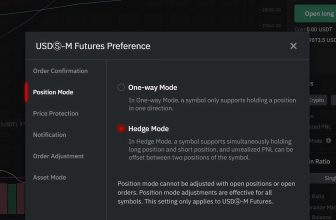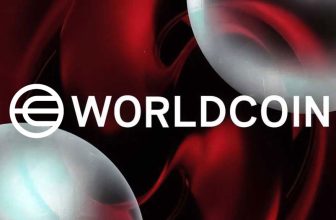Regarding trading financial instruments, traders encounter two common terms: spot and future. Spot refers to the current market price of an asset, while futures are contracts to buy or sell an asset at a predetermined price on a future date. Both spot and future contracts have their advantages and disadvantages. Understanding the differences between spot and futures contracts can help traders make better-informed decisions when investing in financial markets.
What is Spot Trading?
Spot trading refers to buying or selling an asset at its current market price. In spot trading, the settlement of the transaction usually takes place within two business days of the trade execution. The spot price of an asset is determined by market demand and supply, and it fluctuates based on various factors, such as economic news, market sentiment, and global events.
What are Futures Contracts?
Futures contracts are financial instruments that allow traders to buy or sell an asset at a predetermined price on a future date. Futures contracts are standardized, which means that they have specific contract sizes, delivery dates, and settlement methods. Futures contracts are traded on exchanges, and the market demand and supply determine the prices of futures contracts.
How do Futures Contracts Work?
When a trader buys a futures contract, they agree to buy the underlying asset at a predetermined price on a future date. On the other hand, when a trader sells a futures contract, they are agreeing to sell the underlying asset at a predetermined price on a future date. The predetermined price is known as the futures price, and the market demand and supply determine it.
Futures contracts have a set expiration date, and traders must either settle the contract or roll it over to a new contract before the expiration date. Settlement of a futures contract can occur in two ways: physically delivering the underlying asset or through a cash settlement. In the case of cash settlement, the difference between the futures price and the spot price of the asset is settled in cash.
What are the Advantages and Disadvantages of Spot and Futures Trading?
Advantages of Spot Trading
- Immediate Execution: Spot trading allows traders to buy or sell an asset at its current market price, providing immediate execution.
- Transparency: The spot market is transparent, and traders can access real-time price information.
- Low Transaction Costs: Spot trading involves low transaction costs, as there are no fees associated with holding or rolling over contracts.
Disadvantages of Spot Trading
- Limited Profit Potential: Spot trading has limited profit potential, as traders can only profit if the asset price increases after they buy it or decreases after they sell it.
- Limited Leverage: Spot trading involves limited leverage, which means that traders must have sufficient capital to buy or sell an asset.
Advantages of Futures Trading
- High Leverage: Futures contracts allow traders to control a larger position with a smaller amount of capital, providing higher leverage.
- Speculation: Futures contracts allow traders to speculate on the price movements of assets without owning them, providing a wider range of trading opportunities.
- Risk Management: Futures contracts can be used for risk management, as they allow traders to lock in a price for future transactions.
Disadvantages of Futures Trading
- Margin Requirements: Futures trading involves margin requirements, which means that traders must have sufficient capital to meet the margin calls.
- Higher Transaction Costs: Futures trading involves higher transaction costs than spot trading, as fees are associated with holding and rolling over contracts.
Spot vs. Future Prices: Key Differences
The main difference between spot and future prices is the timing of delivery and payment. With spot prices, delivery and payment happen immediately, while with futures, delivery and payment occur at a future date that is agreed upon in the contract.
Another key difference is that spot prices are typically more volatile than futures prices due to the immediate delivery and payment. Futures prices are also influenced by other factors, such as interest rates and the cost of carry, which can make them less volatile than spot prices.
Finally, spot prices are traded over the counter (OTC), while futures prices are traded on exchanges. This means that spot prices are not standardized and can vary from one trader to another, while futures prices are standardized and can be easily traded by anyone on the exchange.
Which is Right for You: Spot or Future Prices?
Deciding whether to trade spot or future prices will depend on your investment goals and risk tolerance. If you’re looking for immediate delivery and payment and don’t mind the higher risks associated with volatility, spot prices may be the right choice for you. However, futures may be better if you’re looking for greater price stability and transparency and don’t mind the more complex trading and margin requirements.
It’s also important to consider the specific asset you’re interested in trading. Some assets, such as currencies and commodities, may have more liquid futures markets, making futures trading a more viable option. Other assets, such as certain stocks, may not have futures contracts available, making spot trading the only option.
Whether to trade spot or future prices will ultimately depend on your circumstances and investment strategy.
Understanding the Spot and Future Markets
Spot and futures markets are both important components of the financial markets and can provide valuable insights into the supply and demand dynamics of various assets.
In the spot market, prices are determined by the immediate buying and selling of assets, with no agreement for future delivery or payment. The spot market is often used by traders looking to take advantage of short-term price movements in an asset.
In the futures market, prices are determined by the agreement for future delivery and payment of an asset. Futures are often used by traders looking to hedge against price movements or take a longer-term asset position.
Spot and Future Trading Strategies
Many different trading strategies can be used in both spot and futures markets. Some popular strategies include:
- Trend following: This strategy involves identifying trends in an asset’s price movements and trading in the direction of the trend.
- Mean reversion: This strategy involves identifying when an asset’s price has deviated too far from its historical average and trading in the opposite direction.
- Arbitrage: This strategy involves taking advantage of price differences between different markets or instruments to make a profit.
How to Determine Spot and Future Prices
Spot prices are determined by the immediate buying and selling of assets in the market. Factors that can influence spot prices include supply and demand, market sentiment, and economic indicators.
Futures prices are determined by the agreement for future delivery and payment of an asset and are influenced by factors such as interest rates, supply and demand, and the cost of carry.
Spot and Future Price Volatility
As mentioned earlier, spot prices are typically more volatile than futures prices due to the immediate delivery and payment. However, both spot and futures prices can be influenced by various factors that can cause market volatility.
Some factors that can contribute to volatility include geopolitical events, economic indicators, and unexpected news or events that impact the supply and demand of an asset.
Conclusion
In summary, spot, and futures trading have advantages and disadvantages, and the choice between them depends on the trader’s investment goals, risk tolerance, and trading strategy. Understanding the differences between spot and futures trading is crucial for traders to make informed decisions and maximize their profits while minimizing their risks.
FAQs
-
Is spot trading riskier than futures trading?
No, both spot and futures trading involves risks, and the level of risk depends on the trader’s investment goals, risk tolerance, and trading strategy.
-
Can I make more profit with futures trading than with spot trading?
It depends on the market conditions and the trader’s trading strategy. Futures trading offers higher leverage and speculation opportunities and involves higher transaction costs and margin requirements.
-
Can I use futures contracts for long-term investments?
Futures contracts are designed for short-term trading and risk management and are unsuitable for long-term investments.
-
Can I roll over a futures contract indefinitely?
No, futures contracts have a set expiration date, and traders must either settle the contract or roll it over to a new contract before the expiration date.
-
Is it possible to trade both spot and futures contracts?
Yes, traders can trade spot and futures contracts and use them for hedging, speculation, and risk management.






